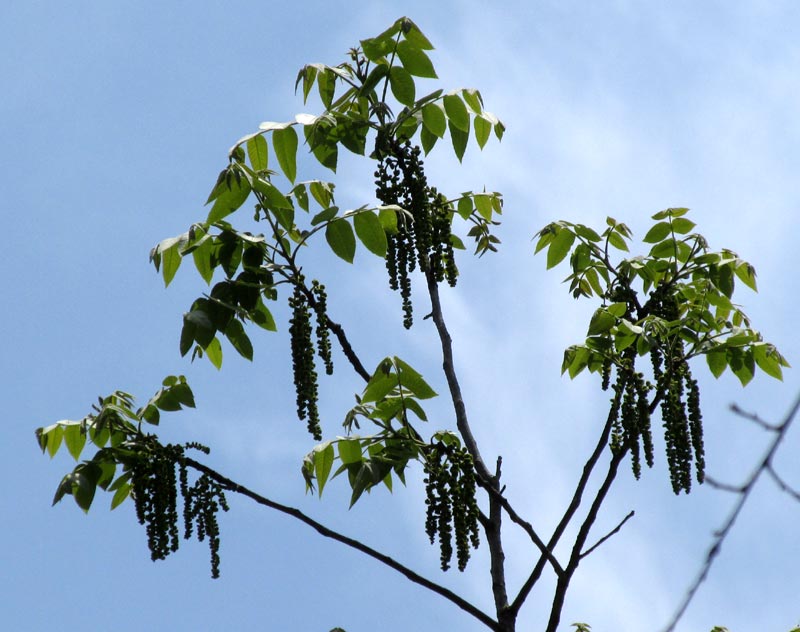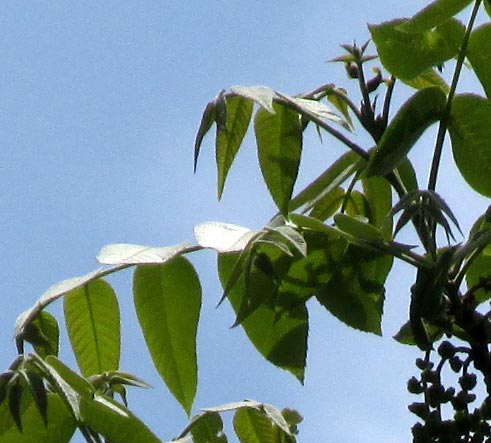Excerpts from Jim Conrad's
Naturalist Newsletter
entry from field notes dated April 15, 2022, taken in disturbed/reforesting borderline cloudforest within 1km of Valle de los Fantasmas, elevation ±2,320m (7600 ft), with limestone bedrock; about 40kms (24 miles), straight-line, ESE of San Luis Potosí, San Luis Potosí state, MÉXICO, (N22.06°, W100.62°)
MEXICAN PECAN FLOWERING

Some local folks saw me carrying a backpack down a dirt trail and invited me to put up my tent around the hill, on the back side of their property, a gracious invitation I gratefully accepted. The plot was on the slope of a limestone hill, right next to a small sinkhole. From my tent door the top of the tree shown above could be seen.
In this area, a tree with pinnately compound leaves alternating on the stem, and dangling aments of male flowers like that, can only be a hickory tree, genus Carya. The leaves could also belong to a walnut tree, but walnut tree aments aren't produced in close clusters like that. They dangle all alone. Below, an enlarged section of the above photo better shows the leaves, plus female flowers with their two diverging stigmas at the top of the stem:

Only 18 hickory species are known in the whole world, of which apparently only three species make it into upland central Mexico. Of those three, the compound leaves of one species produce only 5 leaflets, while the other is the US's famous Pecan tree, whose leaves I know very well, and what's in the picture aren't leaves of that Pecan. The picture's leaves match perfectly, though, with pictures of the third species, which is the Mexican Pecan, CARYA PALMERI. Pecan trees are kinds of hickory tree. Mexican Pecan is endemic to the arid uplands of northern and central Mexico, though it may have been carried beyond this area by humans liking its nuts.
I read that an important fieldmark for the species is that its especially slender stems bear brilliantly yellow buds. Also, leaflet undersurfaces are densely glandular-scaly and yellow. However, the tree on its steep sinkhole slope was inaccessible for a closer look at these features or maybe to find one of last season's uneaten pecan nuts.